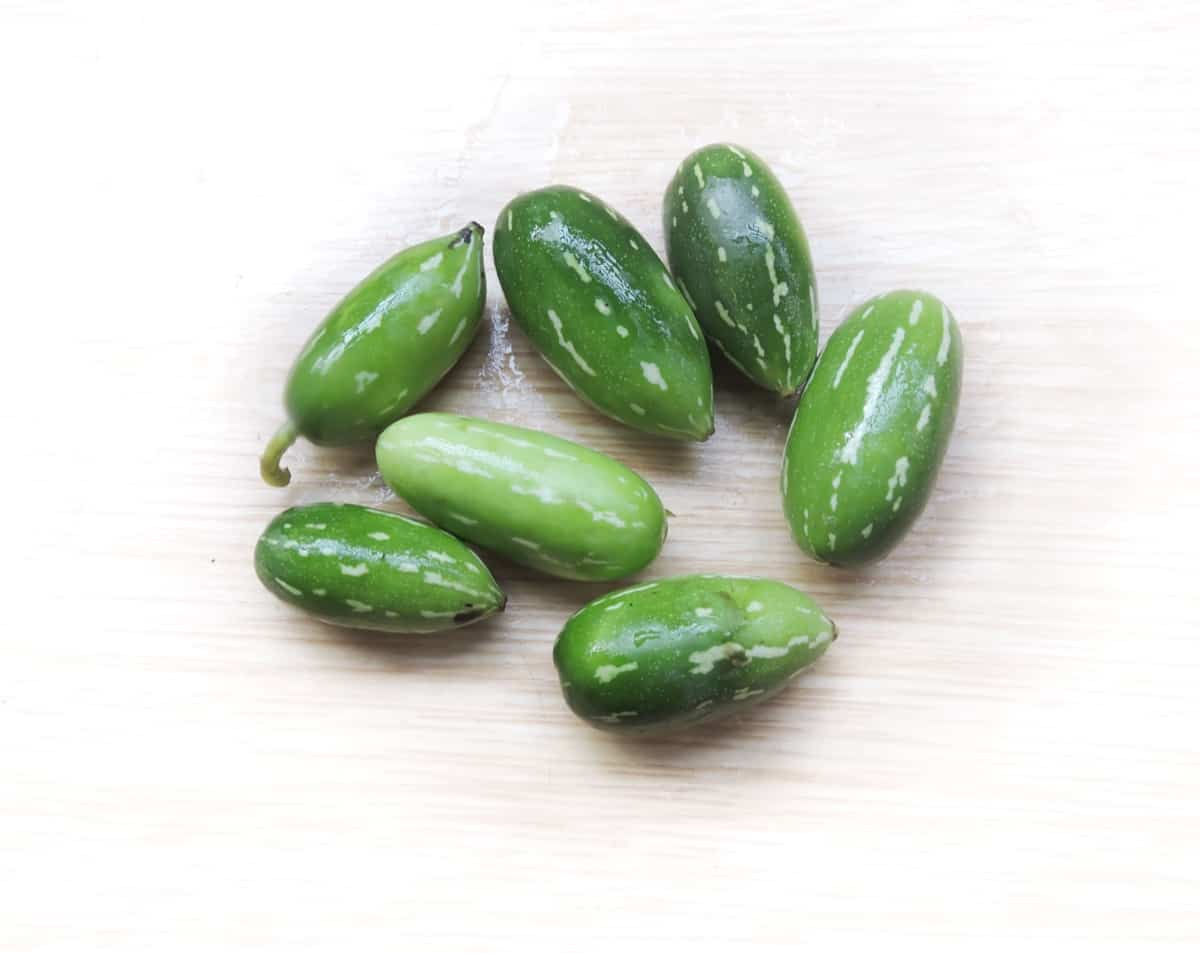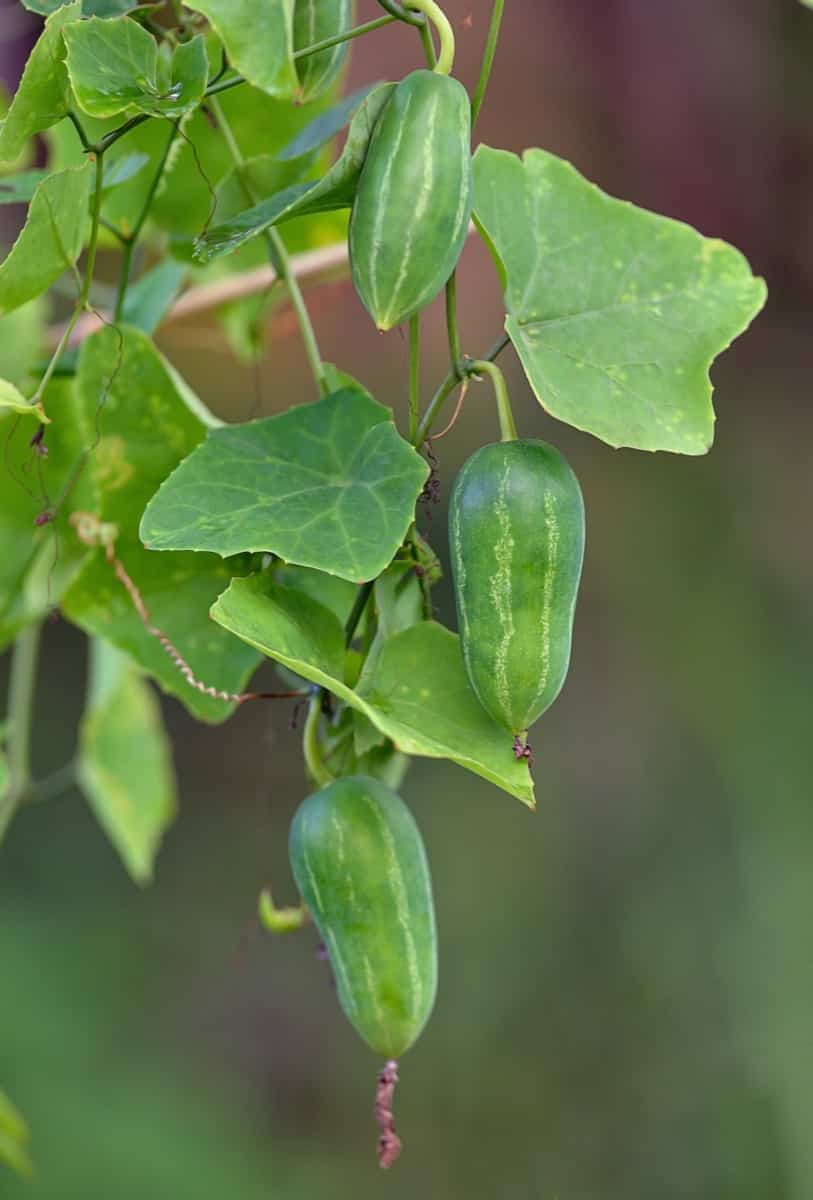By identifying the issue early on and taking appropriate action, you can ensure the health and vitality of your Ivy Gourd plants. Regularly inspect your plants to catch any signs of trouble before they escalate. Implementing preventive measures such as practicing good sanitation habits, providing proper nutrition and watering, using organic pest control methods, and creating a favorable environment will go a long way in preventing many common problems. With patience, care, and knowledge about potential issues, you can overcome any challenges that come your way when cultivating Ivy Gourd.

7 Common Problems with Ivy Gourd Plants
Preventing Ivy Gourd Vine Borers: Effective Control Methods
Ivy Gourd vine borers can be a frustrating problem for gardeners trying to grow this versatile plant. These pests, the larvae of moths, tunnel into the stems and vines of Ivy Gourd plants, causing damage and ultimately leading to their demise. One effective way to prevent Ivy Gourd vine borers is by regularly inspecting your plants for signs of infestation. Look for small holes or sawdust-like frass near the base of the vines.
If you spot any suspicious activity, immediately cut out and destroy the affected areas. Another control method is using floating row covers. These lightweight fabrics are a physical barrier against adult moths, preventing them from laying eggs on your plants. Be sure to secure the edges tightly so that no insects can sneak in.
Encouraging natural predators such as birds or beneficial insects like parasitic wasps can also help keep vine borers at bay. You create a natural balance in your garden ecosystem by providing habitat and food sources for these helpful creatures. Additionally, good sanitation is crucial in preventing Ivy Gourd vine borer infestations. Remove fallen leaves or debris around your plants regularly to eliminate potential hiding places for adult moths.
Dealing With Leaf Curling in Ivy Gourd Plants
Dealing with leaf curling in Ivy Gourd plants can be a frustrating problem for gardeners. When you notice the leaves of your Ivy Gourd plant curling up, it’s a sign that something is not quite right. One possible cause of leaf curling is inadequate watering. Ivy Gourd plants prefer consistently moist soil, so if you’re not giving them enough water or if the soil is drying out too quickly, the leaves may start to curl. Make sure to water your plants regularly and deeply to moisten the soil.
Another culprit behind leaf curling could be nutrient deficiencies. If your Ivy Gourd plant lacks essential nutrients like nitrogen, potassium, or magnesium, it can lead to stunted growth and curled leaves. Consider using a balanced fertilizer for vegetable plants to give your Ivy Gourds the necessary nutrients. Pests can also contribute to leaf curling in Ivy Gourd plants.
Aphids, spider mites, and whiteflies feed on plant sap and cause damage to the foliage. Regularly monitor plants for any signs of pest infestations and take measures to control them naturally using insecticidal soap or neem oil. Environmental factors can cause stress on Ivy Gourd plants leading to leaf curling. Ensure that your plants are located in an area with adequate sunlight and protection from extreme weather conditions.
Controlling Pests on Ivy Gourd Plants Naturally
One of the common problems that gardeners face when growing Ivy Gourd plants is dealing with pests. However, there are natural methods you can use to control these pesky invaders without resorting to harsh chemicals. Introducing beneficial insects like ladybugs and lacewings can help keep aphids and other small pests in check. These predators feed on the pests, effectively controlling their population. Additionally, planting companion plants such as marigolds or basil around your Ivy Gourd can deter harmful insects with their strong scent.
Handpicking them off the leaves is effective for larger pests like caterpillars or beetles. Alternatively, you can create homemade insecticidal soap by combining water and mild dish soap in a spray bottle. Simply spray this solution onto affected areas to kill off unwanted bugs. Another natural pest control method is neem oil.
This organic oil derived from neem trees acts as an insecticide and fungicide, making it useful for tackling multiple issues simultaneously. Regularly inspecting your Ivy Gourd plants for signs of pest infestation will allow you to catch any problems before they become widespread. By implementing these natural pest control methods, you can ensure healthy growth and abundant harvests from your Ivy Gourd plants without harming the environment or yourself with harsh chemicals.
Identifying and Treating Ivy Gourd Fungal Diseases
Powdery Mildew
- Symptoms:This disease appears as a powdery coating on the plant’s leaves stems, and fruits.
- Treatment: To treat powdery mildew, removing and disposing of any affected plant parts is important. You can try using homemade remedies, such as a mixture of baking soda and water, to control the spread of the fungus.
Downy Mildew
- Symptoms: Downy mildew causes yellowish-brown patches on the upper surface of leaves along with fuzzy growth underneath.
- Treatment: To manage downy mildew, ensure proper air circulation around your plants by spacing them apart. Avoid overhead watering and irrigate at ground level to prevent moisture buildup on foliage.
In case you missed it: How to Grow and Care for Swedish Ivy: Planting Instructions

Gray Mold
- Symptoms: It typically appears as brown spots surrounded by a grayish fuzz on leaves, stems, flowers, and fruit.
- Treatment: To combat gray mold, remove infected plant material promptly and avoid overcrowding your plants.
Managing Nutrient Deficiencies in Ivy Gourd Plants
Nutrient deficiencies can be a common problem for Ivy Gourd plants, but you can ensure their healthy growth and productivity with proper management. One of the most important nutrients for these plants is nitrogen. A lack of nitrogen can lead to stunted growth and yellowing leaves. To address this deficiency, consider adding organic matter or using a balanced fertilizer that contains nitrogen.
Another crucial nutrient for Ivy Gourd plants is phosphorus. Insufficient phosphorus can result in poor root development and reduced fruit production. You can boost phosphorus levels by incorporating bone meal or rock phosphate into the soil before planting. Potassium deficiency may manifest as weak stems and increased susceptibility to diseases. To prevent this issue, apply potash-rich fertilizers such as wood ash or potassium sulfate around the base of the plant.
In addition to these macronutrients, micronutrients like iron, manganese, zinc, and magnesium are essential for the overall health of Ivy Gourd plants. Monitor your plant’s foliage regularly for any signs of deficiencies, such as yellowing between veins or mottled leaves. To rectify micronutrient deficiencies, foliar sprays containing chelated forms of these minerals effectively provide quick relief to plants.
Preventing Ivy Gourd Plant Wilting and Drooping Leaves
One common problem many gardeners face with their Ivy Gourd plants is wilting and drooping leaves. This can be a frustrating issue, as it not only affects the aesthetics of the plant but also indicates an underlying problem that needs to be addressed. Improper watering practices often cause wilting and drooping leaves in Ivy Gourd plants.
Overwatering or underwatering can both lead to this issue. It’s important to find the right balance when watering your plants. Another potential cause of wilting and drooping leaves is nutrient deficiencies. Ivy Gourds require a balanced diet of nutrients to thrive. A lack of essential minerals like nitrogen, potassium, or magnesium can weaken plants with wilted foliage.
Consider using organic fertilizers or compost to give your Ivy Gourds the necessary nutrients. Pests may infest your Ivy Gourd plants, causing stress and ultimately leading to wilting leaves. Regularly inspect plants for any signs of pest activity and take appropriate measures such as using natural insecticides or introducing beneficial insects for control.
Managing Excessive Vine Growth in Ivy Gourd Plants
Excessive vine growth can be a common issue with Ivy Gourd plants, but fortunately, there are ways to manage and control it. If left unchecked, the vines can become overgrown and tangled, making it difficult for the plant to receive proper sunlight and air circulation. One effective method for managing excessive vine growth is pruning. Regularly trim back any long or unruly vines to help maintain a more compact shape. This prevents overcrowding, encourages new growth, and improves overall plant health
Another strategy is to provide appropriate support structures such as trellises or stakes. By training the vines upward rather than allowing them to sprawl on the ground, you can help redirect their energy into vertical growth instead of horizontal spreading. Additionally, ensuring that your Ivy Gourd plants receive adequate nutrition is crucial in controlling excessive vine growth. A balanced fertilizer for vegetable plants can help promote healthy foliage development while discouraging rampant vine expansion.
In case you missed it: How to Increase Female Flowers in Ivygourd: Explained in 10 Steps to Increase Yield and Profit

Conclusion
Remember, prevention is always better than cure regarding plant care. To prevent future problems with your Ivy Gourds, provide them with optimal growing conditions such as well-drained soil, adequate sunlight, and regular watering. Additionally, practicing good hygiene in your garden by removing fallen leaves or diseased plants will help prevent the spread of pests and diseases.
- Feed Your Flock for Less: Top 10 Tips to Save on Chicken Feed
- Ultimate Guide to Ossabaw Island Hog: Breeding, Raising, Diet, and Care
- Hatching Answers: The Top 10 Reasons Your Chickens Aren’t Laying Eggs
- Eggs and Economics: Breaking Down the Cost of Raising Backyard Chickens
- Defend Your Greens: Proven Methods to Keep Iguanas Out of Your Garden
- Ultimate Guide to Cinnamon Queen Chicken: A Comprehensive Guide for Beginners
- Ultimate Guide to California Tan Chicken: Breeding, Raising, Diet, Egg-Production and Care
- Ultimate Guide to Marsh Daisy Chicken: Breeding, Raising, Diet, and Care
- 10 Types of Chicken Farming Businesses You Can Start for Profits